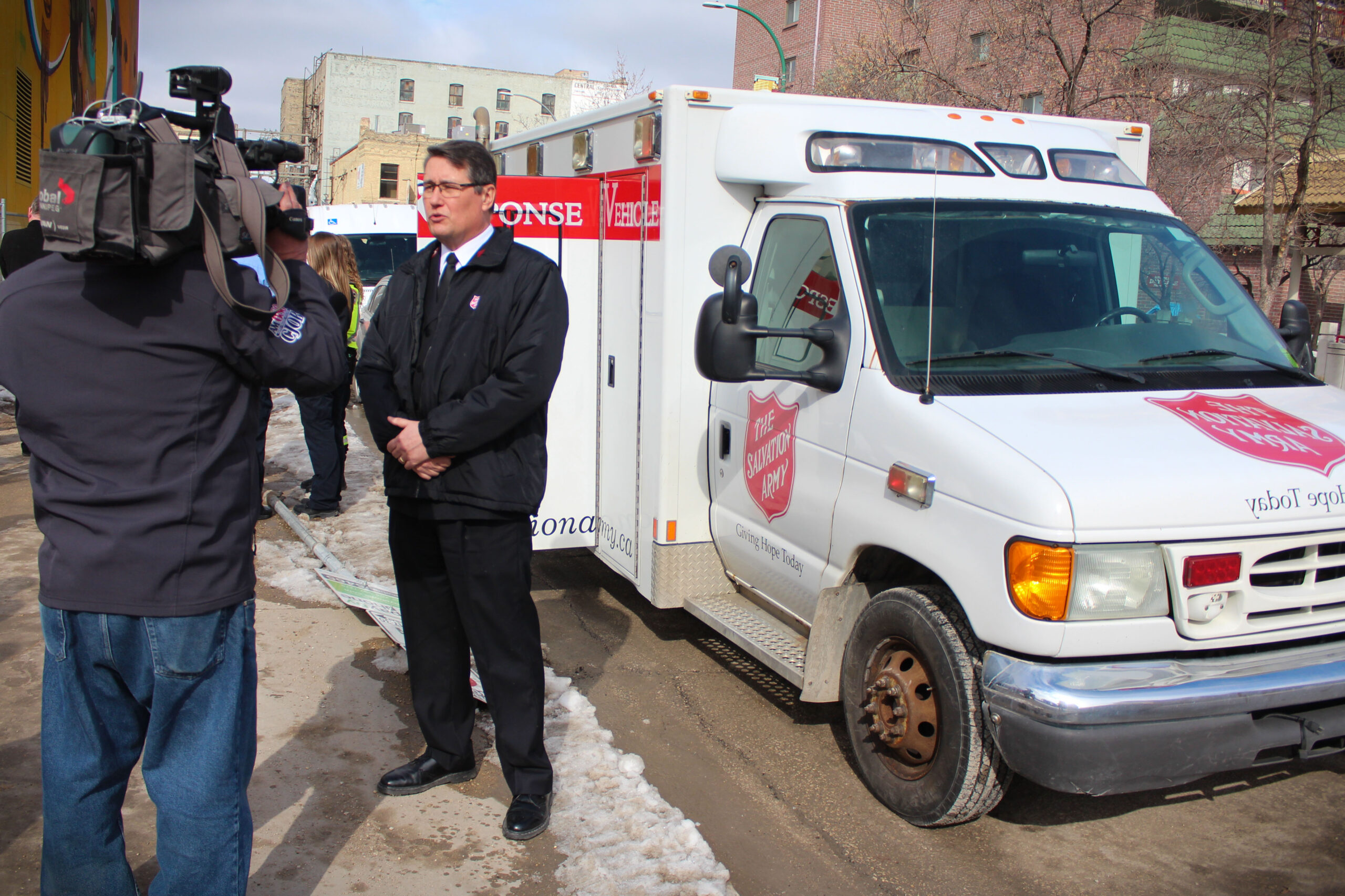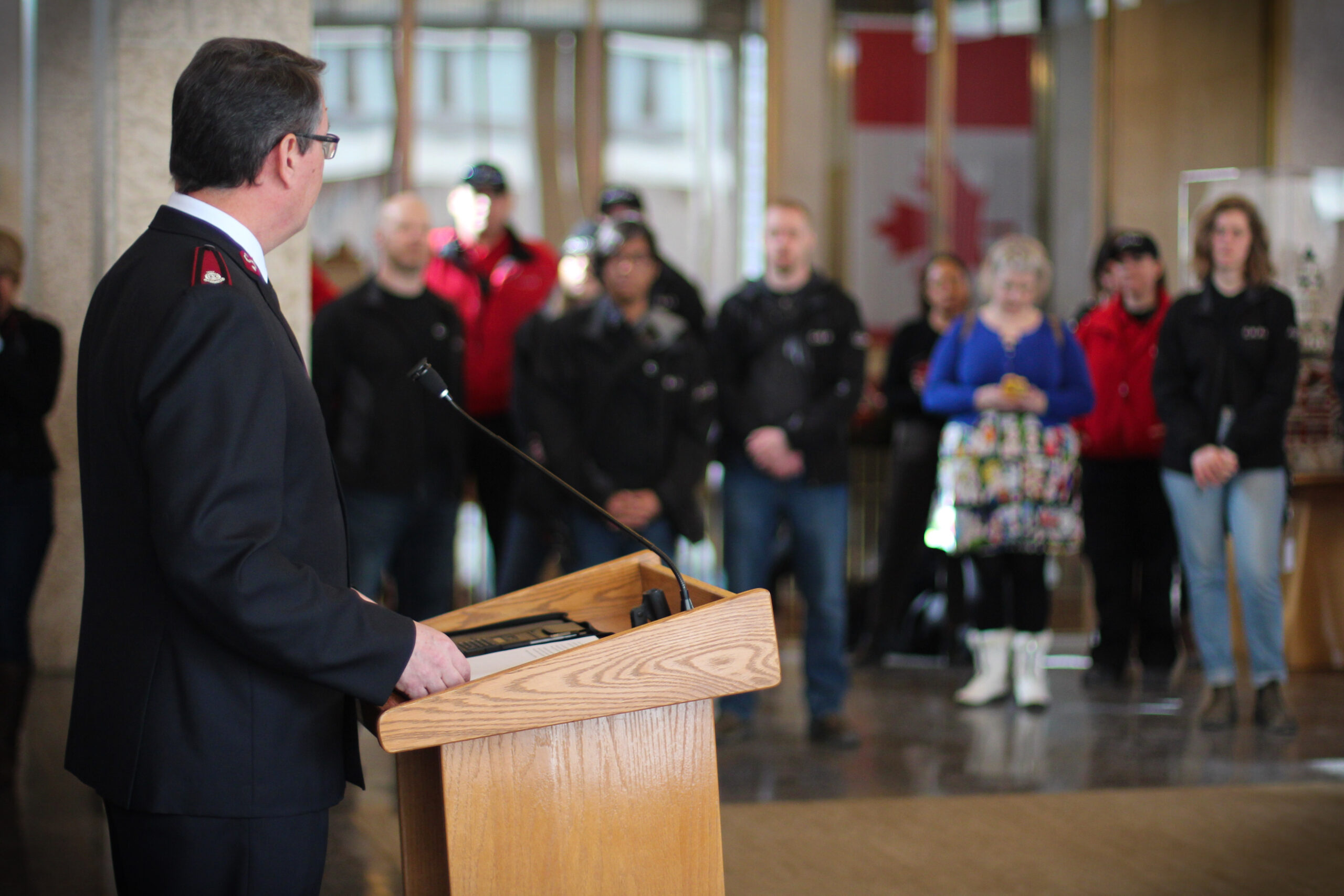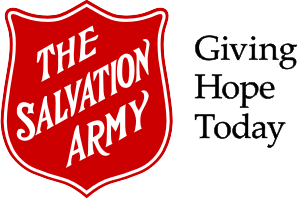The Salvation Army in Winnipeg celebrates new shelter transportation protocol


Major Rob Kerr addresses the media and various community partners at City Hall Tuesday morning.
The Salvation Army in Winnipeg joined Mayor Brian Bowman and other community partners at City Hall on Tuesday, to officially announce and celebrate the implementation of the ‘voluntary transport to drop-in shelters protocol.’
“The new protocol provides Winnipeg Fire and Paramedic Service personnel additional patient care options when responding to situations where an individual refused transport to hospital, but needs access to food, shelter and social services,” explained Winnipeg mayor Brian Bowman during the press conference, saying the protocol change will, “add another layer of support for those in need on our streets.”
The new protocol has been in effect since January 24, 2018, and to date 22 individuals have made use of it.
“We believe that this is a very important step in the work that we do on the streets,” said Major Rob Kerr, divisional secretary of Public Relations and Development with The Salvation Army’s Prairie Division. “The Salvation Army is committed to serving the people of Winnipeg, and the people who are most marginalized and most vulnerable on the streets and in our community in all ways.”
The protocol came about through a partnership and agreement between The Salvation Army, Winnipeg Fire Paramedic Service (WFPS), Winnipeg Regional Health Authority (WHRA), Main Street Project, and Downtown Winnipeg BIZ, and will work as follows:
- The WFPS 911 Communication Centre receives a call from a patient or a member of the public and dispatches the appropriate Emergency Medical Services (EMS) and/or Fire resource(s) based on information provided by the caller. Upon arrival, WFPS paramedics or firefighter-paramedics perform a detailed assessment, initiate treatment if required and offer the patient transportation to a hospital.
- If the patient accepts EMS transport to a hospital, the person will be brought to the most appropriate medical facility.
- If the patient refuses transport to a hospital and meets the WFPS criteria for refusal of treatment and transport, WFPS personnel can use the Voluntary Transport to Drop-In Shelters Protocol. The protocol provides WFPS paramedics or firefighter-paramedics with the option to recommend to the patient that they be transported to a local drop-in shelter. The protocol will be used in circumstances where WFPS paramedics or firefighter-paramedics feel the patient may be at risk due to safety concerns, general lack of wellbeing, or weather conditions.
- If the patient agrees to be transported to a drop-in shelter, WFPS personnel will contact the WFPS 911 Communications Centre to arrange transportation of the patient via one of three community partners: Downtown Winnipeg BIZ, Main Street Project and The Salvation Army.
-

Mayor Brian Bowman speaks with the media about the implementation of the new protocol.
WFPS 911 Communications Centre staff will determine which community partner to contact based on availability and the location of a patient. Mobility of the patient will also be considered to accommodate patients that need wheelchair accessible transportation.
- WFPS personnel will remain with the patient until the community partner arrives on scene and transports the patient.
The Salvation Army in Winnipeg is pleased to help implement this new protocol, and extends its sincere thanks to all community partners and the City of Winnipeg for helping to make it a reality.
